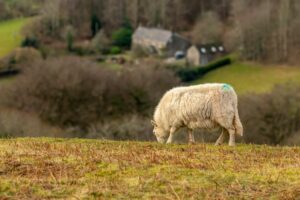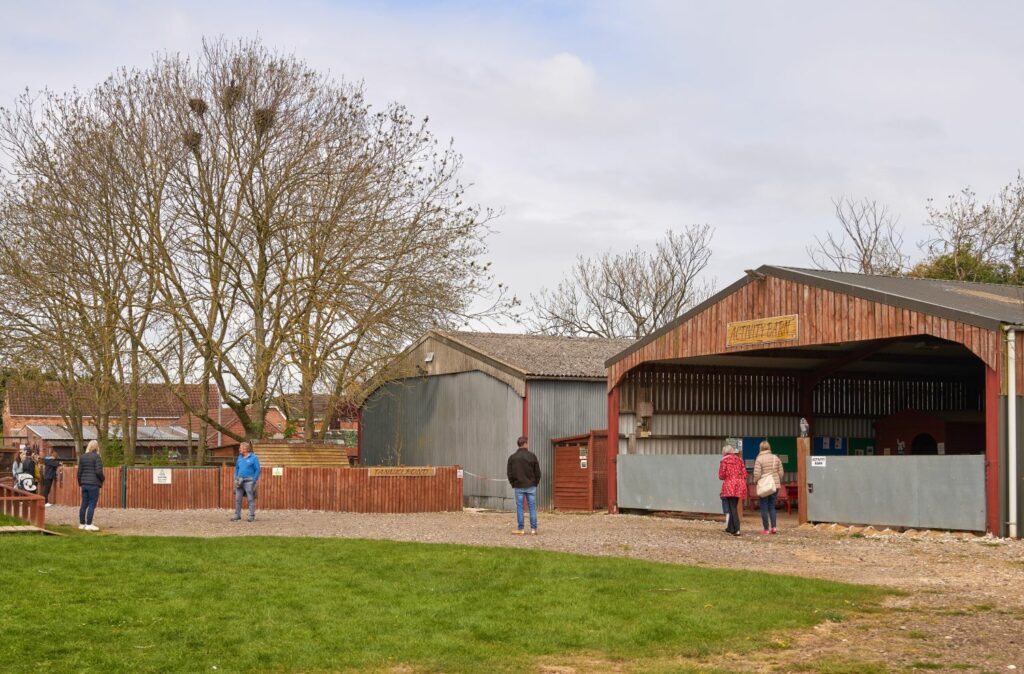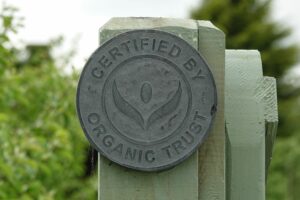Reversing the trend of excluding small farms from subsidy: An update across Four Nations
28th February 2023
At Oxford Real Farming Conference (ORFC) 2023, policy campaigners from The Landworkers’ Alliance (LWA) and the Irish equivalent body Talamh Beo provided an update on what small farmers can expect from future subsidy payments across the four UK nations.

Despite the substantial economic, social, and environmental benefits delivered by small farms, there has been long-standing underinvestment in small scale agriculture by the UK government, session chair Jyoti Fernandes, co-founder and campaigns & policy coordinator for LWA remarked.
Amongst others, small farms are havens for wildlife, harbouring many different species of plants and animals and increasing the biodiversity of the land as a result. They also promote greater community engagement, reconnecting people with food and farming which is of increasing importance in the current economic climate, Ms Fernandes explained.
The aim of the session, taking place on Day 3 of ORFC 2023, was to shed light on the incredibly detailed work the LWA has been doing to make a case for small farms in future government policy and celebrate the wins achieved along the way.
The philosophy “get bigger or get out” still prevails when it comes to subsidy distribution in UK agriculture, Ms Fernandes pointed out, with most payments directed towards the arable sector and large livestock holdings. As a result, there has been a severe decline in small farms across the country, with 35,000 such businesses lost since 2005.
According to the LWA co-founder, less than 1-2% of government funding currently goes to support horticulture and the hard work of market gardeners. Small pig and poultry farms are also often excluded from subsidy, which consists of mainly area-based payments.
Without the necessary support, these sectors remain vulnerable to being undercut by cheap imports from factory farms with low animal welfare standards, Ms Fernandes said.
Therefore, she stressed the urgent need for reversing the current trend of excluding small farms from subsidy to avoid putting thousands of farmers out of business who are producing quality, sustainable, and environmentally friendly local food.
On that note, she introduced the session’s speakers, who talked about the importance of small farms and what policy can look like to truly support their work across all four UK nations.
Scotland – new Small Farms grant scheme on the horizon
Tara Wight, Scotland campaigns & policy coordinator for LWA, began her talk by briefly outlining the nation’s unique agricultural landscape.
According to Ms Wight, land ownership in Scotland is the second most concentrated in the world, with a large average farm size of 220ha as opposed to 82ha in England. However, the country still has an abundance of small farms, including 20,000 small holdings and an equivalent number of crofts.

A traditional croft cottage at Glencoe in the Scottish Highlands.
Crofting is a land tenure and ownership system unique to Scotland, only present in the Highlands and Islands. Most crofters have a small amount of private land ranging from 0.5 to 50ha, with the average being 5ha, Ms Wight explained.
In the current system, all crofters must live within 32 miles of their land and have access to Common Grazings, which counts towards the total farm area, thus benefitting crofters when applying for area-based payments.
Despite its contribution to the food supply chain, crofting is not considered part of Scotland’s main agricultural landscape and is often forgotten about to some extent, Ms Wight pointed out. However, there is crofting-specific funding available to farmers, most of which is spent on infrastructure and fencing, she added.
In terms of the current agricultural support, the subsidy system consists of mostly area-based payments with a minimum threshold of 3ha, which automatically excludes small horticulture holdings.
Small farmers with an income of less than £32,000 can apply for capital grants, and there’s also a small amount of funding for sustainability and organic conversion, Ms Wight explained.
Whereas, crofters can apply for the Crofting Agricultural Grant Scheme and receive up to £25,000/year, she continued. Funding is also offered for building and renovation work carried out on crofts through the Croft House Grant.
In more recent news, the Scottish Agricultural Bill is currently in the process of going through parliament, proposing a four-tiered payment system, Ms Wight revealed. However, she added the proposals appear vague, unambitious, and less progressive than existing legislation, which will likely cause the Scottish government to miss its carbon targets for agriculture.
Other policy reforms in the works include:
- The Good Food Nation Act
- The Local Food Strategy
- The Biodiversity Strategy
- The Circular Economy Bill
To improve the outlook for small farmers in Scotland, the LWA has been campaigning for area-based payments to be replaced by Universal Basic Income (UBI) for active farmers, land reforms which support the creation of small farms, and a moratorium of carbon credit schemes until there is better legislation.
In addition, the LWA has formed the Scottish Agroecology Action Group (SAAG) in 2022, together with the Nature Friendly Farming Network (NFFN), the Soil Association, the Scottish Crofting Federation and Propagate. The organisation’s members will join their forces in lobbying, campaigning and facilitating training for the agroecological transition in Scotland.
Recently, the LWA’s efforts resulted in a small win for small farmers in Scotland in that a new Small Farms grant scheme will be piloted which doesn’t have an income threshold, Ms Wight revealed.
In future plans, the group is hoping to organise more farm visits for MSPs from the Rural Affairs Committee and acquire small farmer representation in ARIOB, the main board advising the government on farming policy going forward, Ms Wight concluded.
Wales – lowering the area limit for small farms
From across the Welsh border, Holly Tomlinson, campaigns & policy coordinator for LWA, brought the latest on the financial support available for small farmers and future schemes in the making.

86% of agricultural land in Wales is used for grazing.
Starting off with some figures, Ms Tomlinson said the average farm size in Wales is on the smaller side at 48ha, with more than 55% of farms currently being no larger than 20ha. The majority of agricultural land in the country is used for grazing, with crops and horticulture taking up only 2%, she added.
However, only 0.1% of Welsh agricultural land is dedicated for edible horticulture, making up about 200 farms, of which 117 were less than 5ha (2020) and have not received any payments under the Common Agricultural Policy (CAP).
According to Farming Facts and Figures 2021, more than half of Welsh farms are classed as ‘very small’, defined as having less than one full-time equivalent worker. Another survey defined very small farms as having an income of less than €25,000, which again is an indicator other than actual farm size, Ms Tomlinson pointed out.
While the current threshold for subsidy payments in Wales is 5ha, a new Agricultural Bill going through the Senate proposes a minimum limit of 3ha or 550 hours worked as a basic requirement for grants. This is a win for small farmers, Ms Tomlinson said, as the new criteria relates to applicants running a land-based business rather than owning a certain amount of land.
Moreover, the Welsh government is also rolling out a new Sustainable Farming Scheme that will replace the CAP going forward. The scheme consists of three parts, offering farmers payment for completing a pre-defined set of actions:
- Universal actions – compulsory for everyone in the scheme, such as monitoring and reporting requirements, setting aside 10% of land for nature
- Optional actions – for farmers who want additional income, include requirements for public engagement and public education days, increasing biodiversity and carbon sequestration
- Collaborative actions – landscape-scale collaboration, also across the supply chain, very vague requirements so far
With regards to horticulture, Ms Tomlinson said there are a few grants aimed at the sector, including some interim grants such as a horticultural start-up grant and a horticultural development grant, none of which have area-based requirements.
To win better government support of small farming in Wales, the LWA have been lobbying for the abolition of area-based payments, more start-up & development grants, funded traineeships, bridging the gap in public procurement, a dedicated horticulture public goods scheme, better access to land & local markets, and planning reforms.
England – advocating for small farms and agroecology in ELMS
Next up, Rebecca Laughton, horticulture campaigns coordinator for LWA England, gave delegates an insight into the organisation’s work directing the subsidy system away from area-based payments towards measuring the impact of farmer produce.
Ever since Brexit in 2016, the LWA has been lobbying for “public money for public goods”, and later, in 2021, for agroecology to get a mention in the Agriculture and Environment Acts. The outcome of that work, Ms Laughton said, was ELMS.
Speaking of the positives of the scheme, she said Defra have been trying to co-design ELMS with farmers, land managers and environmental organisations to ensure the new payment system meets the needs of the industry. Moreover, they have also enabled organisations like LWA to put forward ideas and receive funding to run tests and trials (T&T) with successful proposals.
In 2019, the LWA successfully applied to run the Growing the Goods ELMS T&T, which was subsequently focused on horticulture. The aim of the trial was to develop a system that measures public goods (PGs) actions in more appropriate units other than area to provide flexibility for different types of businesses, Ms Laughton explained.
The Growing the Goods T&T also proposed the concept of Land Management Plans (LMPs), which would allow farmers to layer PGs on the same area of land and get much higher payments.
As for SFI, which was proposed as the most accessible tier of ELMS, the aim was to generate widespread take-up by farmers, Ms Laughton said. The scheme was focused around natural capital and ecosystem services and includes asset-based standards, in which ‘assets’ are things like soil, hedges, grassland.
The three levels of SFI – basic, intermediate, and advanced – offer farmers payments/ha depending on which set of actions are completed. So far, the scheme has been poorly received, due to the low payment rate not providing enough incentive to farmers.
On a more positive note, LWA is currently in the process of developing SFI standards for market gardens and orchards, where the first hectare would be paid at a higher rate than subsequent hectares, Ms Laughton said.
Other tiers of ELMS include Landscape Recovery, which will see the launch of ambitious large-scale “rewilding” projects spanning entire landscapes, as well as Countryside Stewardship +, which Ms Laughton believes offers lots of possibilities for agroecology.
All ELM schemes currently have a 5ha entry requirement, which is likely to remain in place for the foreseeable future, according to the speaker.
“A problem we have with making a case for small farmers is the government saying, ‘If we take away the 5ha threshold, what will stop large gardeners applying for subsidies?’” she added.
To make sure small farmers are accounted for, the LWA has joined the ELMS External Engagement Group in which organisations get prior access to policies before they are made publicly available.
Other background advocacy the LWA has been involved in include:
- Farm study tours and open days
- Creating volunteering opportunities and courses
- Lobbying for public engagement – essential for changing public attitudes to farming
- Campaigning with Countryside Trust, Sustain, and other organisations

Farm visits are an effective way to campaign as they help debunk the myth that only large-scale farms are viable.
Ireland – Farming with Nature scheme and results-based payments a possibility
Last but not least, Bridget Murphy, project manager of the Soil Biodiversity European Innovation Partnership project for the Irish agroecological farm organisation Talamh Beo (meaning: living land), talked about how small farmers and agroecology fit into the subsidy system in Northern and Southern Ireland.
According to Ms Murphy, Northern Ireland (NI) has the smallest average land size in the UK at around 30 ha, with 85% of land designated for livestock or crops produced to feed livestock.
While NI has begun its process of developing a new agricultural payment scheme to replace the EU’s CAP, there are significant problems in terms of water quality, GHG emissions, biodiversity loss, and the impact of market volatility on the agricultural sector, Ms Murphy said.
The Department of Agriculture, Environment and Rural Affairs (DAERA) has recently published a series of high-level priorities for the purposes of agricultural policy framework, which are built around increased resilience, productivity, environmental sustainability and supply chain functionality.
However, these “fancy” words in government policy have no relation to how organisations like Talamh Beo or LWA understand them, Ms Murphy pointed out, and are only used to maintain the pretense of responding to the demands of farming groups.
Speaking of how payments for farmers will change in the coming years, she said the £320 million funding allocated for subsidies in NI will be maintained until 2024, after which the situation remains unknown.
“Unlike the rest of the UK, NI has decided not to underpin future agricultural policy and payments through a NI Agriculture Act, which risks stalling a transition to more regenerative farming and land management,” Ms Murphy said.
The government does, however, have plans to develop a Farming with Nature scheme, which will reward farmers for adopting nature-friendly practices with results-based payments, she added.
Meanwhile, in the south, the average land size is 32 ha, with most agricultural land being used for livestock, small tillage, and tiny horticulture, Ms Murphy said. While there isn’t a clear definition of small farms in the Republic of Ireland, farmers who haven’t intensified and modernised with big machinery instantly fall into this category.
“They want small and productive farms to go, bigger precision farmers to rise, the definition of production still only being linked to livestock, tillage and the bigger horticultural sector,” she remarked.
Due to vegetable farming being seen as small, the country imports most of its fruit and veg from abroad. At the same time, the opportunity to produce food on a small scale increases greatly with procurement, which is why it’s so important to promote public engagement in farming, Ms Murphy added.
From the asks of Talamh Beo when the new cap was being drawn up, she highlighted:
- Transitioning to agroecological farming systems
- Moving away from a focus on industry, agribusiness, growth, and global markets towards a focus which secures future livelihoods
- Support for ecosystems rather than commodification
- A CAP strategic plan built on human rights, the rights of family farmers and people who work in rural areas
- Access to high quality food produced by farmers earning a fair wage while they’re regenerating those ecosystems and soils
- Affordable local food

Very few farms in the Republic of Ireland are certified as organic.
Addressing the hot topic of organic farming, Ms Murphy revealed Ireland consists of less than 2% organic farms at present.
“While all other EU countries are aiming for 25% organic, we’re aiming to have 7.5%, but we have a very clear idea that we’re not going to get there,” she added.
On a final note, she called for women farmers to be given equal support initially until they reach at least the average payment rate in the industry.
Rounding up the session, Jyoti Fernandes encouraged the audience to join LWA as farmer members or as supporters to help further the work of speakers and their colleagues and back the organisation’s capacity to initiate change.
“By coming to our events and participating in our campaigns, you’re making change happen and can help reverse this trend,” she concluded.
